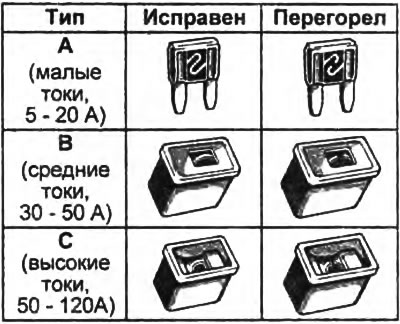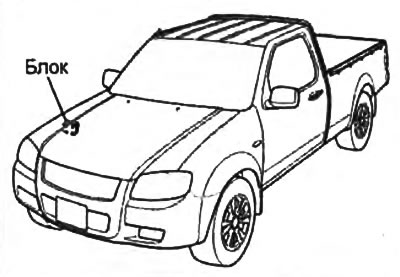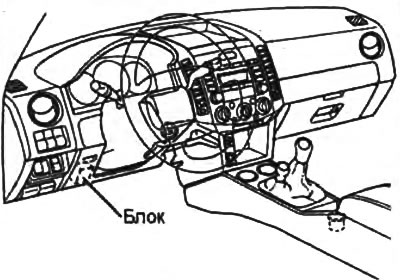Note: for removing and installing type fuses "A" use a special puller "tweezers".

The fuses are rated to blow before all wiring is damaged in the event that an overload occurs in the electrical circuits from the battery.
Note:
- Before replacing fuses, determine the cause of the electrical overload and make any necessary repairs.
- It is forbidden to use wire instead of fuses, even for temporary installations, as this may cause damage to the electrical system and cause a fire.
1. To change the fuse, turn off the ignition.
2. Press the latch and remove the cover of the relay and fuse box and determine which element is burned out.

The location of the fuse box in the engine compartment of the car.

The location of the fuse box in the passenger compartment.
Note:
- For fuse locations and circuit descriptions, see chapter "Body electrical equipment";
- On the covers of the fuse boxes, the names of the electrical circuits and the characteristics of the fuses are indicated.
3. Install only a fuse with the ampere rating indicated on the fuse box cover.
4. If there is no spare fuse, then in critical situations, you can remove the fuse from position '' A / C", which is not necessary for the normal movement of the car, and use it if the denomination matches the necessary one.
Note: Do not use a higher rated fuse or any other items (For example, "bugs") instead of a blown fuse. This can cause more serious damage up to and including a fire.
5. If you do not have a fuse with a nominal value, then you should use a fuse with a lower value, as close to the nominal value as possible.
Note: It is recommended to keep a set of spare fuses in the vehicle.
6. If a new fuse blows immediately, this indicates a fault in the electrical system.
